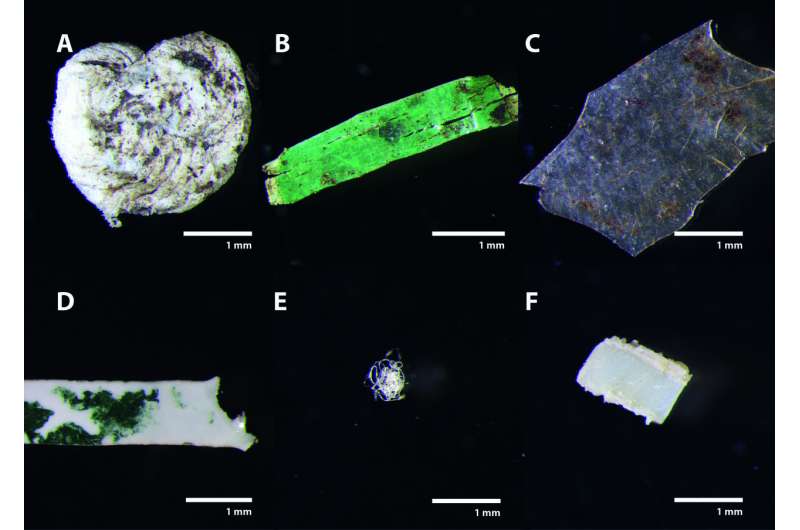April 5, 2018 report
Study shows microplastics in biowaste wind up in organic compost and fertilizers

A team of researchers at the University of Bayreuth in Germany has found that microplastics that make their way into biowaste can show up in organic composts and fertilizers. In their paper published on the open access site Science Advances, the group describes their results when testing organic composts and fertilizers from several processing plants.
Microplastics have been in the news a lot of late, due mainly to their presence in water, but they may be causing unknown problems on land, as well. In this new effort, the researchers wondered if microplastic bits that make their way into uneaten food or farmer plant waste could also make their way into fertilizers that are made using organic waste. To find out, they tested samples from a wide variety of commercially available organic fertilizers.
Organic fertilizer is made the old-fashioned way—by letting microorganisms break down organic material. It is made via aerobic and anaerobic processes. Aerobic composting plants create fertilizer by mixing organic matter with soil and allowing microbes to break it down into material suitable for feeding to plants. An anaerobic biowaste digester, on the other hand, is a facility where organic material is thrown into a sealed vat where it is "digested" to produce both fertilizer and biogas.
The testing by the researchers was done on fertilizers made in facilities in Germany, which is unique, because Germany is a country that is serious about dealing with organic waste such as table scraps or food that has gone bad in the fridge. Thus, in addition to paper bins, most Germans also have bins for disposing of such materials. Those materials are sent to processing plants where it is cleaned and combed before conversion into fertilizer. Such facilities also collect plant waste from farms.

In their study, the researchers tested samples from both aerobic and anaerobic facilities, and also from a control facility that used only plant waste from a farm They found some amount of microplastics in all of the samples they tested except those from the control farm. They further found that the amount of microplastics depended on the process used at a given plant and that there tended to be more in the fertilizer from the aerobic facilities. They suggest microplastics wind up in biowaste due to their presence in foods, and also from being collected or stored in plastic containers.
More information: Organic fertilizer as a vehicle for the entry of microplastic into the environment, Science Advances 04 Apr 2018: Vol. 4, no. 4, eaap8060, DOI: 10.1126/sciadv.aap8060
Abstract
The contamination of the environment with microplastic, defined as particles smaller than 5 mm, has emerged as a global challenge because it may pose risks to biota and public health. Current research focuses predominantly on aquatic systems, whereas comparatively little is known regarding the sources, pathways, and possible accumulation of plastic particles in terrestrial ecosystems. We investigated the potential of organic fertilizers from biowaste fermentation and composting as an entry path for microplastic particles into the environment. Particles were classified by size and identified by attenuated total reflection-Fourier transform infrared spectroscopy. All fertilizer samples from plants converting biowaste contained plastic particles, but amounts differed significantly with substrate pretreatment, plant, and waste (for example, household versus commerce) type. In contrast, digestates from agricultural energy crop digesters tested for comparison contained only isolated particles, if any. Among the most abundant synthetic polymers observed were those used for common consumer products. Our results indicate that depending on pretreatment, organic fertilizers from biowaste fermentation and composting, as applied in agriculture and gardening worldwide, are a neglected source of microplastic in the environment.
Journal information: Science Advances
© 2018 Phys.org




















